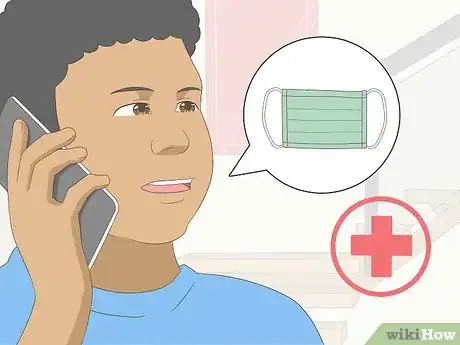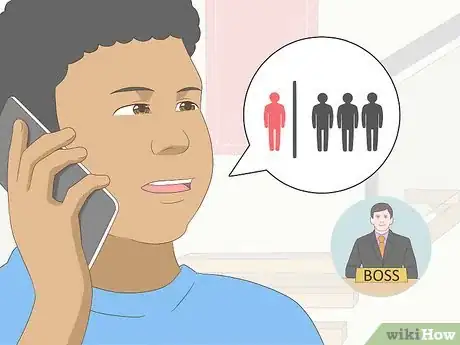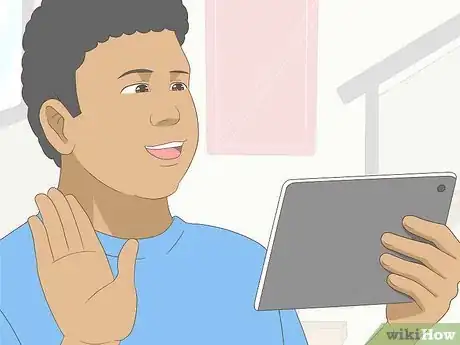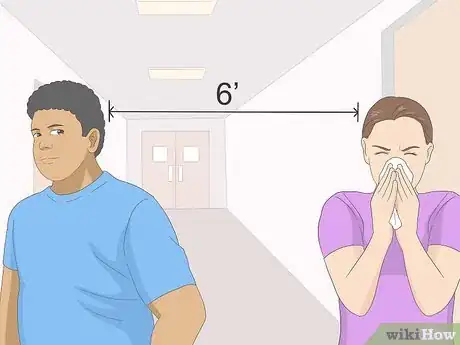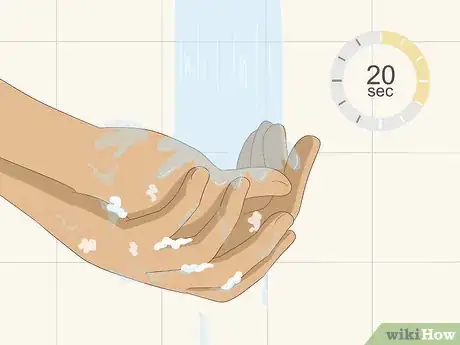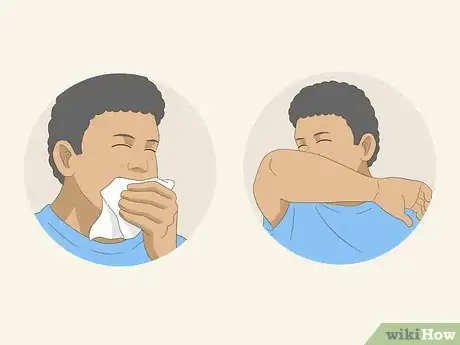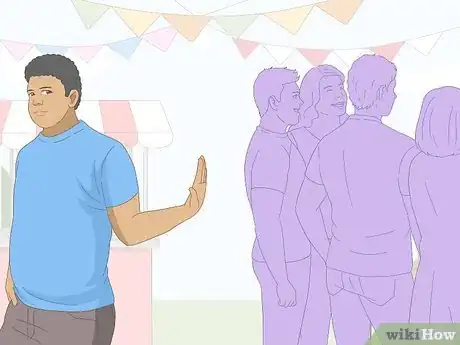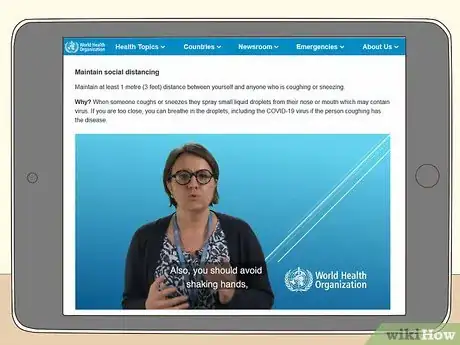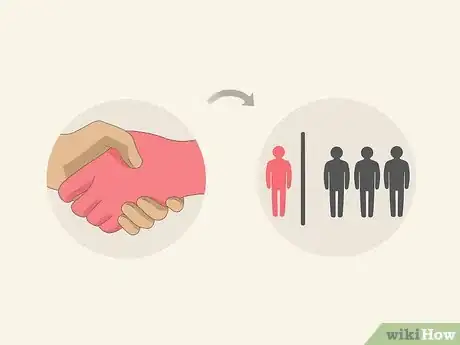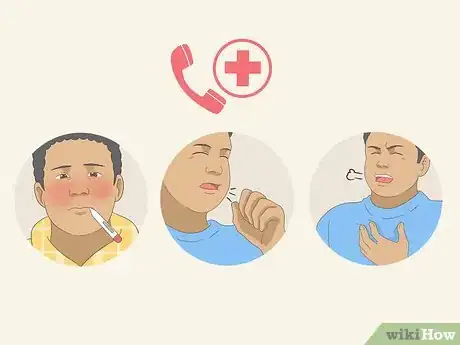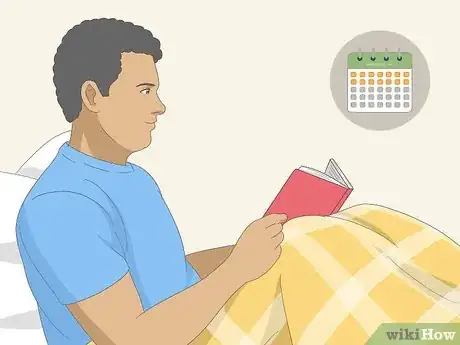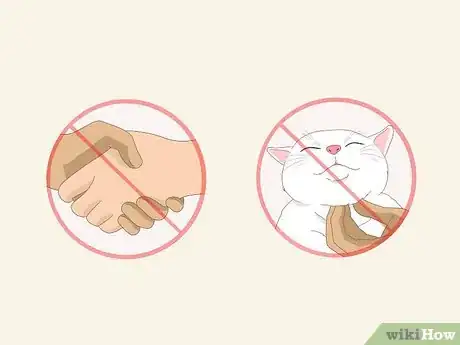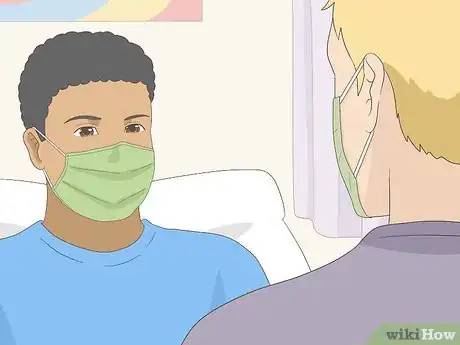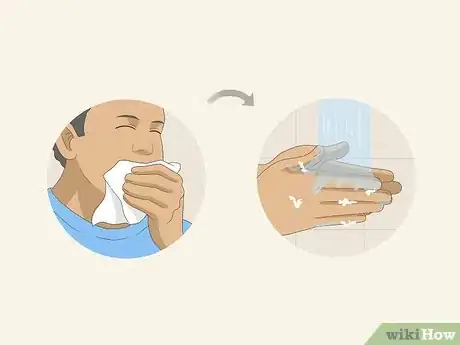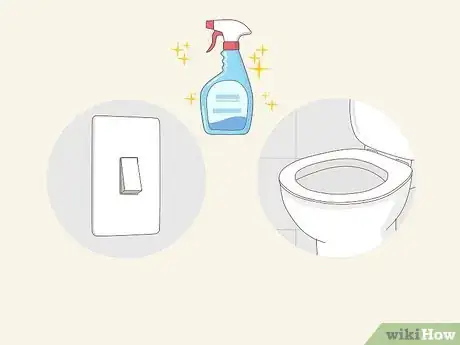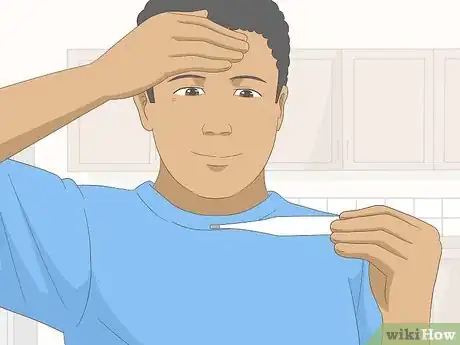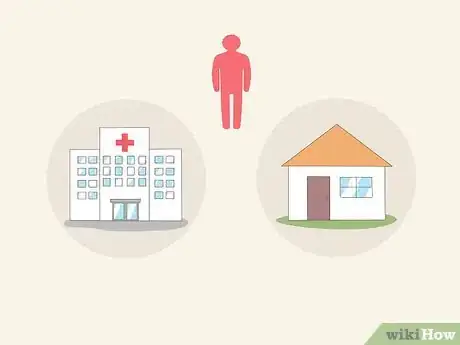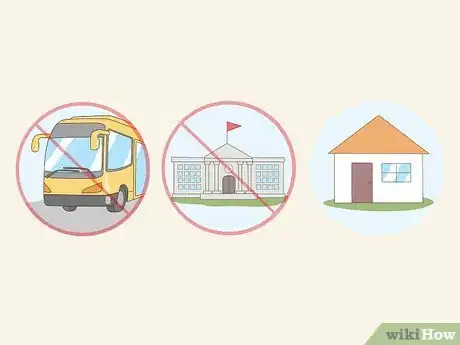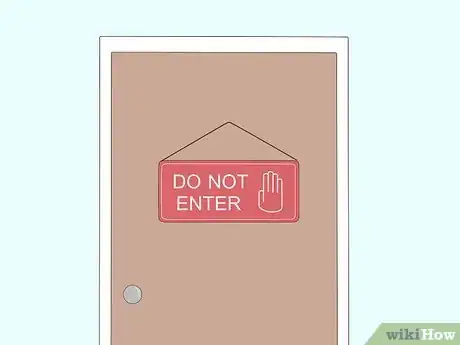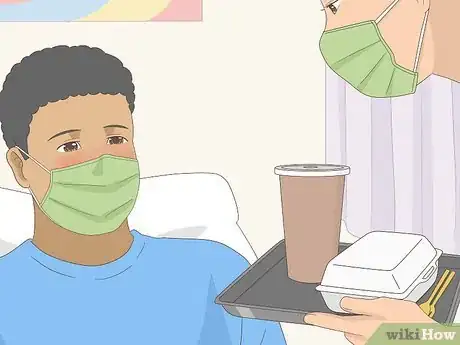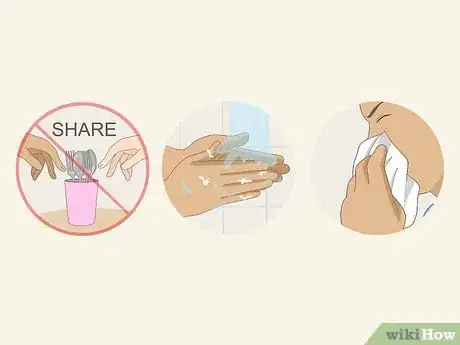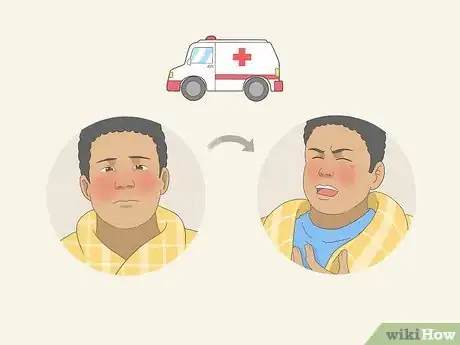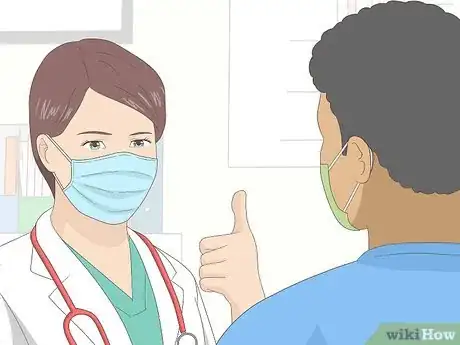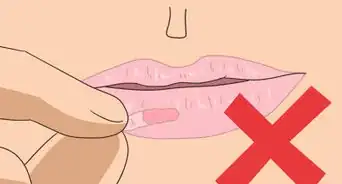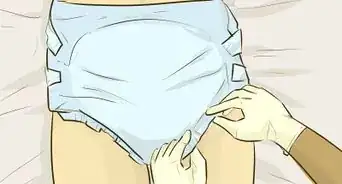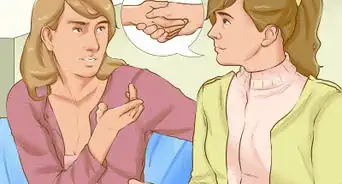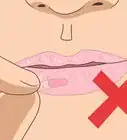This article was co-authored by World Health Organization and by wikiHow staff writer, Megaera Lorenz, PhD. The World Health Organization (WHO) is a specialized agency of the United Nations responsible for international public health. Founded in 1948, the World Health Organization monitors public health risks, promotes health and well-being, and coordinates international public health cooperation and emergency response. The WHO is currently leading and coordinating the global effort supporting countries to prevent, detect, and respond to the COVID-19 pandemic.
There are 24 references cited in this article, which can be found at the bottom of the page.
This article has been viewed 70,305 times.
The thought of going into quarantine may sound scary, but it’s a simple precaution to protect yourself and others from contagious diseases. If you live in an area that’s affected by an infectious disease outbreak, such as the recent COVID-19 pandemic, health officials may recommend that you practice social distancing, or limit your time in public in order to protect yourself. If you get sick or might have been exposed to the disease, you might need to go into quarantine or isolate yourself at home until the danger of spreading the infection to others has passed.[1] Stay in touch with your doctor and reach out to friends and loved ones to help put your worries at ease and relieve stress while you’re waiting for your quarantine period to end.
Steps
Coping with Self-Quarantine
-
1Remind yourself that difficult emotions are normal during self-quarantine. Dealing with a dangerous disease outbreak is scary and stressful, and having to quarantine yourself can make those feelings worse. It’s normal to feel fearful, sad, frustrated, lonely, uncertain, or even angry about what’s happening. If you experience any of these feelings, try to acknowledge them without judging yourself.[2]
- It’s also okay if you don’t feel any of these things. Everyone reacts to stressful situations differently.
Keep in mind: If you feel overwhelmed, or if your feelings of distress last for 2 weeks or longer without signs of improvement, you may need additional help. Reach out to your doctor or a therapist, or text the Crisis Text Line at 741741 to be connected to a trained crisis counselor.[3]
-
2Reach out to your doctor if you have questions or concerns. If you’re feeling fearful or uncertain about what’s happening, your doctor may be able to put your mind at ease. Don’t hesitate to call your doctor’s office or reach out to someone in your local public health department if you have questions.[4]
- They may be able to direct you to other helpful resources online or in your community.
-
3Talk to your employer if you’re worried about loss of income. Having to miss work because of self-quarantine, self-isolation, or enforced social distancing can put you under financial stress. If you’re worried, reach out to your employer about your situation. Give them a clear explanation of why you need to miss work and provide a doctor’s note if necessary.[5]
- Some employers may be willing to offer paid sick leave to employees who are in quarantine or isolation due to illness.
- If you live in the U.S., reach out to your human resources department about whether you qualify for Family Medical Leave, which guarantees up to 12 weeks of paid leave for employees who are ill or need to care for a sick family member.[6]
- You can also reach out to your utility providers and explain your situation. They may be able to offer payment arrangements that can reduce your financial burden until you can return to work.
- Look into your state's unemployment policies to see if you qualify. The CARES Act extended unemployment benefits to self-employed and gig workers and provides extra benefits for a longer time period than ususal.[7]
-
4Stay in touch with your friends and family. Being in quarantine or isolation can be extremely lonely. Being alone while you’re ill or fearful of becoming ill can also increase your feelings of anxiety or frustration. Reach out to friends and loved ones by phone, email, social media, or video chat so that you don’t feel so alone.[8]
- In addition to providing a sympathetic ear and helping you relieve loneliness and boredom, friends and loved ones can offer practical help. Don’t be afraid to ask a friend or family member to drop off meals or supplies at your home, watch your pets while you’re in quarantine, or help you with chores that you’re unable to attend to.
-
5Practice stress-relieving activities to help you relax. To fight boredom, anxiety, and frustration, look for simple, enjoyable activities that you can do while you’re stuck at home. Depending on how well you’re feeling, this might include things like:[9]
- Watching movies or TV shows
- Reading
- Listening to relaxing music
- Playing games
- Meditating or doing light stretches or yoga
- Working on hobbies or creative projects
- Doing light housework
Protecting Yourself with Social Distancing
-
1Stay at least 6 feet (2 m) away from obviously sick people. Many contagious diseases spread when people spend time around infected people, even if they don’t actually have any physical contact.[10] This can happen when an infected person coughs or sneezes and people around them breathe in droplets of saliva or mucus from their nose or mouth.[11] If you’re around someone with symptoms of illness, like sneezing or coughing, avoid touching them and try to maintain a distance of at least 6 feet (2 m) at all times.[12]
- According to the CDC, you may be at risk of contracting the COVID-19 virus if you’re within 6 feet (2 m) of an infected person for a prolonged period of time (i.e., more than a few minutes), an infected person coughs on you, or you’re currently caring for or sharing a home with someone who has COVID-19.[13]
-
2Wash your hands frequently when you’re in public areas. Washing your hands is one of the easiest and most effective ways to protect yourself and others from the spread of disease. If you are in a public space or another area where you know you might be exposed to an illness, wash your hands often with soap and running water. Wash your hands for at least 20 seconds, and make sure to wash your wrists, between your fingers, and the backs of your hands.[14]
- It’s especially important to wash your hands after going to the bathroom, after touching high-contact surfaces (such as doorknobs, railings, and light switches), and before handling food or touching your face.
- According to the CDC, warm and cold water are equally effective at washing away germs and viruses. What’s most important is that you use soap and wash for at least 20 seconds. If your skin is sensitive, using cool water can help prevent dryness and irritation.[15]
- If you don’t have access to soap and water, clean your hands with an alcohol-based hand sanitizer.[16]
-
3Keep your hands away from your face as much as possible. Many viruses and germs enter the body through the mucus membranes in your eyes, nose, and mouth. To prevent this, avoid touching your face as much as possible, since your hands may have come into contact with a contaminated surface.[17]
- If you have to touch your face, wash your hands before and after with soap and warm water.
- If possible, use a tissue if you need to wipe, rub, or scratch any part of your face. Throw the tissue away when you’re done.
-
4Cover your mouth and nose if you cough or sneeze. Even if you don’t think you’re sick, it’s important to protect others in your community and set a good example by practicing proper hygiene when you cough and sneeze. Cover your mouth and nose with a tissue, then immediately throw the tissue away. Wash your hands or use hand sanitizer when you’re done.[18]
- If you don’t have a tissue or don’t have time to grab one, cough or sneeze into your bent elbow instead of your hand. This will help prevent you from spreading viruses or germs when you touch things with your hands.
-
5Avoid crowded areas if you’re at high risk or if local health officials recommend it. In some cases, local health authorities may cancel large events or advise that people limit their time in public spaces in order to prevent the spread of disease.[19] You may also need to limit your exposure to crowds and public areas if you’re particularly vulnerable to infection. If you’re not sure whether it’s a good idea to go out in public, ask your doctor for advice.
- For example, the CDC currently recommends that people who are at high risk of getting seriously ill from COVID-19 should stay home and avoid crowded areas as much as possible. This includes older adults (people aged 60 and over) and people with chronic illnesses such as heart disease, lung disease, or diabetes. Immunocompromised people, such as those with HIV/AIDS, cancer patients, people using chemotherapy, or people taking immunosuppressive medications, are also at risk.[20]
- If your doctor or local public health officials advise that you stay home, stock up on necessary supplies such as any medications you are currently taking, groceries, and over-the-counter medical supplies such as tissues and cough medicine.
-
6Get recommendations on social distancing from reputable public health websites. If you live in an area that’s affected by an infectious disease outbreak, such as the COVID-19 virus, visit your local public health website for updates and information. They will provide information about how to protect yourself and others from illness and will let you know whether social distancing is necessary.[21]
- For example, try a web search like “Public health advisory coronavirus Kane County Illinois.”
- You can also check sources such as the CDC or World Health Organization website for more general information.
- Your local public health department may recommend social distancing for particularly vulnerable individuals, such as older adults or immunocompromised people. They may also enforce social distancing by canceling large community events or closing schools if there is evidence of a disease exposure risk.
Practicing Self-Quarantine after Exposure to a Disease
-
1Self-quarantine if you’ve been exposed to an infected person. If you know that you have been in close proximity to someone with a dangerous infectious illness, such as COVID-19, it’s a good idea to self-quarantine in order to protect yourself and others.[22] If you think you’ve been exposed to a contagious disease during an outbreak, contact your doctor or local public health department and ask if you need to quarantine yourself.
- You might get a notification about a potential exposure from your school, your employer, or your local public health department. Take any advisories like this seriously and don’t hesitate to ask questions if you’re not sure what to do.
-
2Call your doctor immediately if you suspect you’re sick. If you think you’ve been exposed to a disease like COVID-19 and you start to experience suspicious symptoms, call your doctor’s office and explain the situation. They may ask you to come in for a medical evaluation and testing, and they can also give you advice about whether self-quarantine is necessary for you.
- For example, call your doctor right away if you experience symptoms such as a fever, coughing, or difficulty breathing, especially if you live in an area where COVID-19 is active.
- Don’t show up at your doctor’s office without calling ahead if you suspect you have a condition such as coronavirus or the flu. They may need to take special precautions in order to protect themselves, you, and their other patients from illness.
- Most clinics are currently offering phone or telehealth visits so that they can check your condition remotely and determine whether you need to come in for treatment and testing. If they think you need to be tested for the coronavirus, they can direct you to a site that has the necessary resources and facilities (such as drive-up testing or a negative pressure room).
-
3Stay home for 14 days or as long as your doctor recommends. The typical recommended time for self-quarantine is 2 weeks.[23] This will give you plenty of time to monitor your condition and determine whether you might pose a risk to others. If your doctor advises you to self-quarantine, ask them how long you need to stay home.
- If you develop symptoms or are officially diagnosed with a contagious illness such as COVID-19, you may need to stay home longer than 2 weeks.
-
4Avoid contact with other people or animals as much as possible. During your quarantine, it’s very important to keep to yourself so that you don’t risk making other people sick. Even if you don’t have any symptoms, avoid having visitors and keep your distance from other people who live with you. Limit contact with your pets as much as you can, including petting, cuddling, feeding, and grooming them.[24]
- Designate one room, such as your bedroom, for your exclusive use. Other people in the home should stay out of the room unless it’s absolutely necessary. If possible, avoid sharing a bathroom with other people in your home.
- If you need to have supplies or food delivered to your home, ask the person making the delivery to leave the items outside your door.
- If you have pets, ask a friend or someone else in your home to care for them until your quarantine period is over. If you have to interact with your pets, wash your hands before and after and wear a facemask.
-
5Wear a mask if you have to be around other people. Even if you don’t have any obvious symptoms of illness, wear a facemask during your quarantine to reduce the risk of spreading a possible infection to others.[25] Put on a mask if someone is visiting you, a family member has to enter your room, or you need to leave your home in order to get medical treatment.[26]
- Anyone who enters your room or needs to be in close contact with you during your quarantine should also wear a mask.[27]
-
6Wash your hands frequently with soap and warm or cold water. Protect both yourself and others from the potential spread of disease during your quarantine by washing your hands regularly. Wash your hands for at least 20 seconds, especially after you cough, sneeze, or blow your nose; after you go to the bathroom; and before you prepare or eat food.[28]
- If you don’t have access to soap and water, use a hand sanitizer that’s at least 60% alcohol. [29]
-
7Cover your mouth and nose whenever you cough or sneeze. If you have to cough or sneeze, prevent the spread of potentially contaminated fluids from your mouth and nose by covering your face with a tissue. If you don’t have a tissue, cough or sneeze into the crook of your arm.[30]
- Don’t leave used tissues sitting around. Throw them away immediately in a lined garbage can, then wash your hands with soap and water.
-
8Disinfect objects and surfaces you come into contact with. Once a day, use a household cleaning product, such as a disinfectant wipe or general-purpose cleaner, to clean surfaces that you use regularly throughout the day. This includes things like doorknobs, counters, tabletops, light switches, and toilet seats.[31]
- Wash anything you put in your mouth, such as eating utensils or thermometers, with soap and hot water.
-
9Monitor your condition closely and get medical help if anything changes. While you’re in quarantine, keep a close eye out for any signs that you may be getting sick or that your condition is worsening. If you notice new or worsening symptoms, call your doctor right away and ask for advice.[32]
- Provide details about what kinds of symptoms you’re having, when they started, and what kinds of treatments you’ve been using, if any (such as over-the-counter medications).
Self-Isolating if You’re Sick
-
1Ask your doctor if you can return home or if you need to be hospitalized. If you have a confirmed diagnosis of a contagious illness such as COVID-19, your doctor will need to evaluate your specific case and make recommendations based on your condition. Discuss whether you can safely go home and, if so, whether you need to stay in isolation until you recover.[33]
- If your doctor thinks you are stable enough to go home, ask for detailed instructions on how to care for yourself during your isolation period. If a friend or family member will be caring for you, ask the doctor to share that information with them.
- Your doctor will send any confirmed lab test results to your local public health department. From there, the public health department will make recommendations about how long you need to stay in isolation.
-
2Stay home unless you need to seek medical care. If you’re sick, it’s imperative that you stay home and rest as much as possible. This will help you recover faster and also protect others from catching your illness. Don’t go to school or work, and avoid taking public transit to visit the doctor if possible.
- Always call ahead if you need to visit the hospital or your doctor’s office. Tell them about your diagnosis and describe any symptoms you’re currently experiencing.
- If you need supplies, have them delivered to your home if possible. Don’t go out shopping while you’re in isolation.
-
3Remain in your own room as much as possible if you share a home. If you can, keep to your own space inside the home and don’t allow pets, visitors, or family members inside. If possible, use your own bathroom instead of sharing one with other people in the home.
- To avoid having to enter other areas of the home, ask family members or other caretakers to leave prepared meals or other supplies outside your door.
- Preferably, you should stay in a well-ventilated room with a window that you can open.[34]
-
4Wear a mask if you have to interact with other people. If you’re too sick to care for yourself, put on a mask any time a caretaker has to be around you. You should also put on a mask if you have to leave your home (e.g., to visit your doctor’s office).
- Have your caretakers wear masks when they’re around you, too.
- If you’re unable to get facemasks due to shortages in your area, cover your nose and mouth with a handkerchief or scarf instead.
-
5Practice proper hygiene to prevent spreading your illness. While you’re in isolation, keep your environment clean and take precautions so that you don’t pass your infection to others in your home. You can help keep your loved ones safe by:
- Washing your hands frequently with soap and warm water, especially after you cough, sneeze, blow your nose, or go to the bathroom.
- Covering your mouth and nose if you cough or sneeze.
- Disposing of used tissues immediately in a lined trash can.
- Not sharing personal items with others. This includes towels, medical supplies (such as thermometers and medicine cups), eating utensils and dishes, personal grooming products, and bed linens.
- Disinfecting surfaces and objects you frequently come into contact with, such as doorknobs, countertops, and toilet seats.
-
6Call your doctor immediately if your symptoms change or get worse. While you’re in isolation, you or your caretaker(s) will need to monitor your condition closely. If you develop new symptoms, start feeling worse, or don’t see any signs of improvement after the expected period of recovery time, call your doctor right away. They can advise you about what to do next.
- If you have a medical emergency, call 911 or your local emergency number. Let the dispatcher know about your diagnosis if possible so that the emergency medical personnel can take proper precautions.
-
7Work with your doctor to determine when you can leave isolation. The length of your self-isolation will depend on your specific situation and symptoms. Even if you feel much better, don’t leave your home until your doctor says it’s safe. This will help protect both you and other people in your community.
- Your doctor may need to consult with your local public health department to determine the best timeline for your isolation.
Expert Q&A
-
QuestionShould I make a supply kit?
 Erik Kramer, DO, MPHDr. Erik Kramer is a Board-Certified Primary Care Physician at the University of Colorado. With over 15 years of experience, his clinical interests include obesity and weight management, diabetes care, and preventive care, as well as embracing a holistic approach to primary care. He received his Doctorate in Osteopathic Medicine (D.O.) from the Touro University Nevada College of Osteopathic Medicine and completed his residency at Central Maine Medical Center. Dr. Kramer is a Diplomate of the American Board of Obesity Medicine.
Erik Kramer, DO, MPHDr. Erik Kramer is a Board-Certified Primary Care Physician at the University of Colorado. With over 15 years of experience, his clinical interests include obesity and weight management, diabetes care, and preventive care, as well as embracing a holistic approach to primary care. He received his Doctorate in Osteopathic Medicine (D.O.) from the Touro University Nevada College of Osteopathic Medicine and completed his residency at Central Maine Medical Center. Dr. Kramer is a Diplomate of the American Board of Obesity Medicine.
Doctor of Osteopathic Medicine Consider stocking up for up to 2 weeks of supplies should you have to quarantine. Refer to the CDC's guidelines for preparing your home, which you can find on the CDC.gov website.
Consider stocking up for up to 2 weeks of supplies should you have to quarantine. Refer to the CDC's guidelines for preparing your home, which you can find on the CDC.gov website.
References
- ↑ https://www.cdc.gov/coronavirus/2019-ncov/if-you-are-sick/quarantine.html
- ↑ https://adaa.org/learn-from-us/from-the-experts/blog-posts/consumer/covid-19-lockdown-guide-how-manage-anxiety-and
- ↑ https://www.crisistextline.org/
- ↑ https://store.samhsa.gov/sites/default/files/SAMHSA_Digital_Download/PEP20-01-01-007_2.pdf
- ↑ https://store.samhsa.gov/sites/default/files/SAMHSA_Digital_Download/PEP20-01-01-007_2.pdf
- ↑ https://www.dol.gov/agencies/whd/pandemic/ffcra-employee-paid-leave
- ↑ https://www.consumerfinance.gov/about-us/blog/protect-yourself-financially-from-impact-of-coronavirus/#income-loss
- ↑ https://www.betterhealth.vic.gov.au/health/ConditionsAndTreatments/quarantine-at-home-coping-tips
- ↑ https://www.betterhealth.vic.gov.au/health/ConditionsAndTreatments/quarantine-at-home-coping-tips
- ↑ World Health Organization. Global Public Health Agency. Expert Interview.
- ↑ https://www.who.int/news-room/q-a-detail/coronavirus-disease-covid-19-how-is-it-transmitted
- ↑ https://www.cdc.gov/coronavirus/2019-ncov/prevent-getting-sick/prevention.html
- ↑ https://www.cdc.gov/coronavirus/2019-ncov/prevent-getting-sick/how-covid-spreads.html
- ↑ https://www.cdc.gov/handwashing/when-how-handwashing.html
- ↑ https://www.cdc.gov/handwashing/show-me-the-science-handwashing.html
- ↑ https://familydoctor.org/handwashing-and-covid-19/
- ↑ https://www.umms.org/coronavirus/what-to-know/prevention-safety/protect/not-touch-face
- ↑ https://www.cdc.gov/healthywater/hygiene/etiquette/coughing_sneezing.html
- ↑ http://www.cidrap.umn.edu/sites/default/files/public/php/185/185_factsheet_social_distancing.pdf
- ↑ https://www.cdc.gov/coronavirus/2019-ncov/need-extra-precautions/index.html
- ↑ https://www.hopkinsmedicine.org/health/conditions-and-diseases/coronavirus/coronavirus-social-distancing-and-self-quarantine
- ↑ https://www.cdc.gov/coronavirus/2019-ncov/if-you-are-sick/quarantine.html
- ↑ https://www.cdc.gov/coronavirus/2019-ncov/php/public-health-recommendations.html
- ↑ https://www.cdc.gov/coronavirus/2019-ncov/if-you-are-sick/steps-when-sick.html
- ↑ World Health Organization. Global Public Health Agency. Expert Interview.
- ↑ https://www.cdc.gov/coronavirus/2019-ncov/if-you-are-sick/steps-when-sick.html
- ↑ https://www.cdc.gov/coronavirus/2019-ncov/prevent-getting-sick/cloth-face-cover-guidance.html
- ↑ https://www.cdc.gov/handwashing/show-me-the-science-handwashing.html
- ↑ https://www.cdc.gov/handwashing/when-how-handwashing.html
- ↑ https://www.cdc.gov/healthywater/hygiene/etiquette/coughing_sneezing.html
- ↑ https://www.cdc.gov/coronavirus/2019-ncov/prevent-getting-sick/disinfecting-your-home.html
- ↑ https://www.cdc.gov/coronavirus/2019-ncov/prevent-getting-sick/disinfecting-your-home.html
- ↑ https://www.cdc.gov/coronavirus/2019-ncov/if-you-are-sick/steps-when-sick.html
- ↑ https://www.cdc.gov/coronavirus/2019-ncov/prevent-getting-sick/Improving-Ventilation-Home.html
About this article
Quarantining yourself can seem scary, but it's the best way to protect yourself and others from infectious diseases, like COVID-19. If you've been exposed to someone who is sick, you should stay home and isolate yourself for 14 days or however long your doctor recommends. This is enough time to determine whether you're sick and pose a risk to others. In the meantime, avoid contact with people and animals as much as possible. Designate one room in your home, like your bedroom, for your exclusive use so you don't infect other people in your household. Wash your hands with soap and water regularly, and disinfect any surfaces you come into contact with. Monitor yourself for any signs that you're getting sick, and contact your doctor right away if things change. Isolating yourself for so long can be lonely and scary, so don't forget to do things you enjoy to help you cope, like reading, exercising, and talking to friends and family over the phone or online. For advice from our Public Health co-author, like how to practice social distancing to protect yourself, keep reading.

